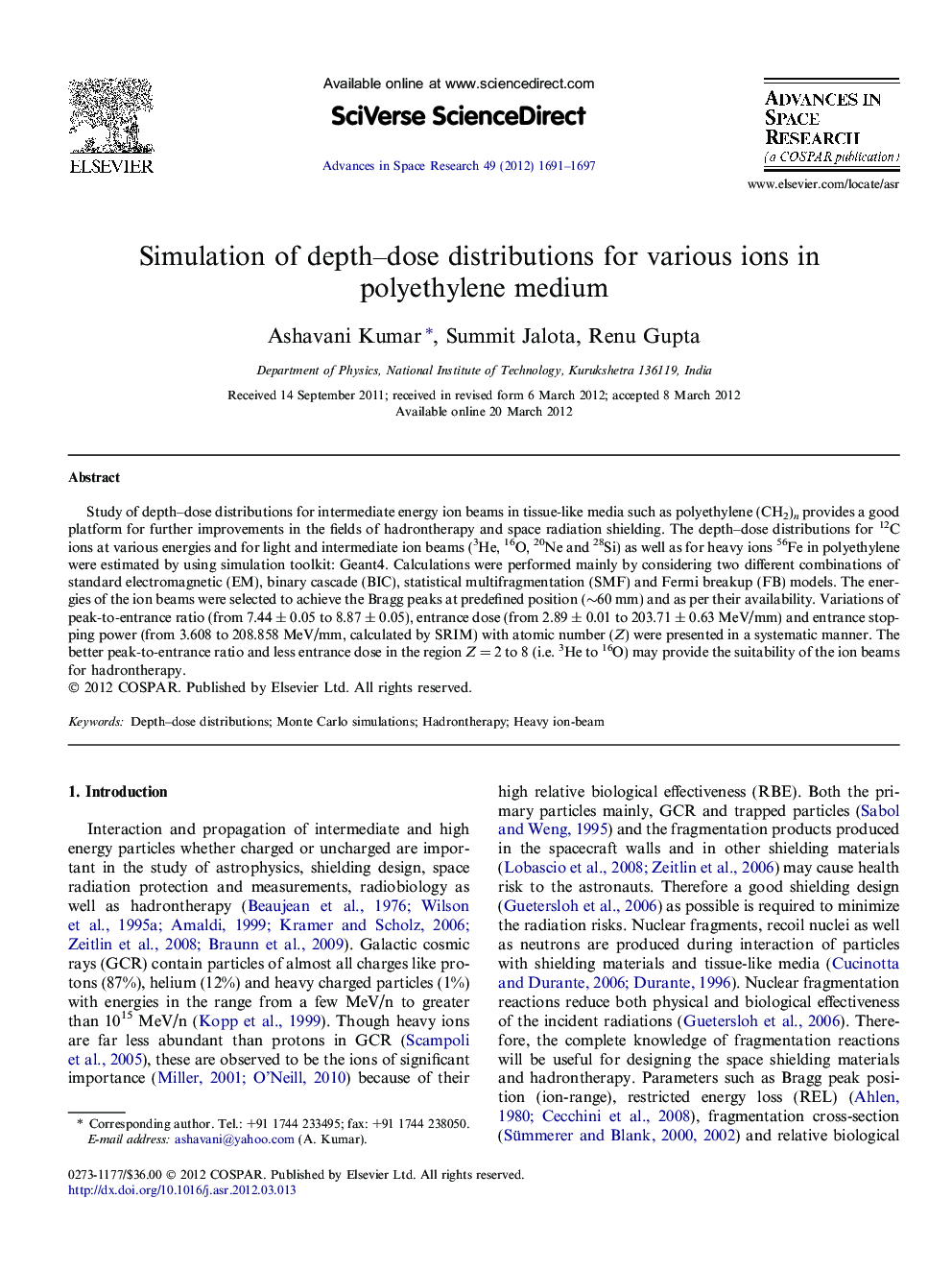| Article ID | Journal | Published Year | Pages | File Type |
|---|---|---|---|---|
| 1764536 | Advances in Space Research | 2012 | 7 Pages |
Study of depth–dose distributions for intermediate energy ion beams in tissue-like media such as polyethylene (CH2)n provides a good platform for further improvements in the fields of hadrontherapy and space radiation shielding. The depth–dose distributions for 12C ions at various energies and for light and intermediate ion beams (3He, 16O, 20Ne and 28Si) as well as for heavy ions 56Fe in polyethylene were estimated by using simulation toolkit: Geant4. Calculations were performed mainly by considering two different combinations of standard electromagnetic (EM), binary cascade (BIC), statistical multifragmentation (SMF) and Fermi breakup (FB) models. The energies of the ion beams were selected to achieve the Bragg peaks at predefined position (∼60 mm) and as per their availability. Variations of peak-to-entrance ratio (from 7.44 ± 0.05 to 8.87 ± 0.05), entrance dose (from 2.89 ± 0.01 to 203.71 ± 0.63 MeV/mm) and entrance stopping power (from 3.608 to 208.858 MeV/mm, calculated by SRIM) with atomic number (Z) were presented in a systematic manner. The better peak-to-entrance ratio and less entrance dose in the region Z = 2 to 8 (i.e. 3He to 16O) may provide the suitability of the ion beams for hadrontherapy.
